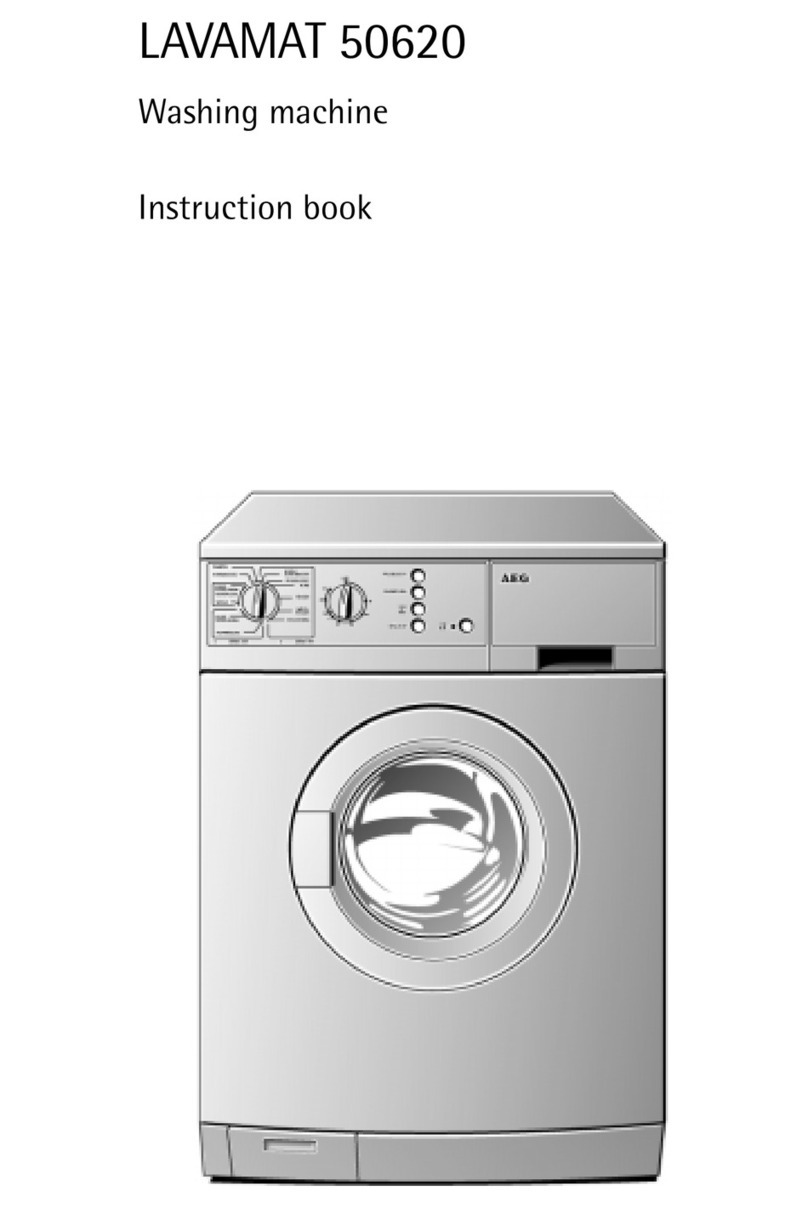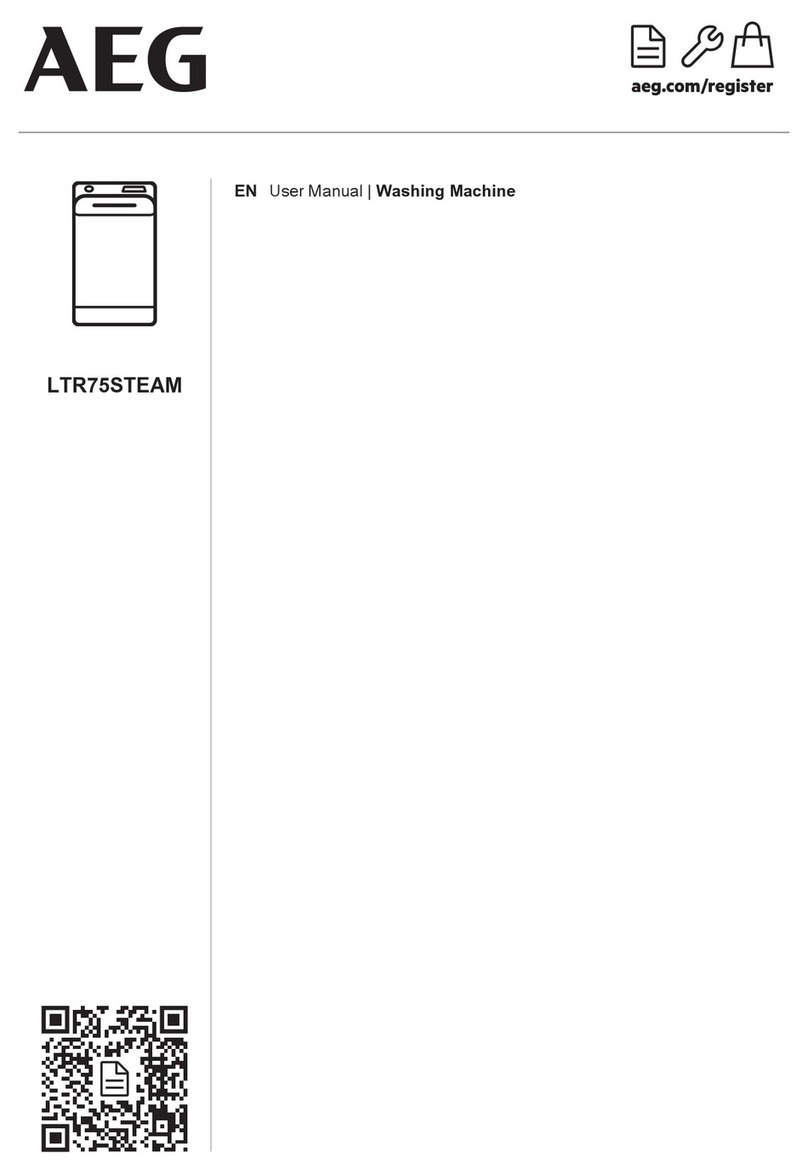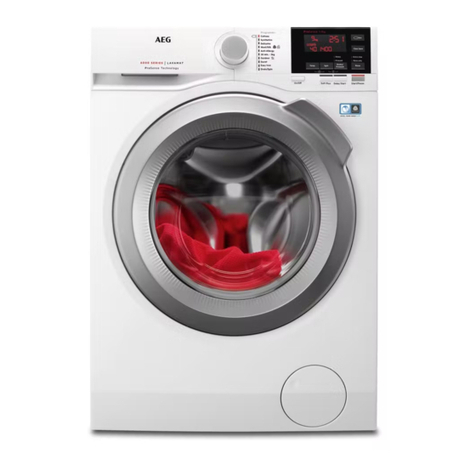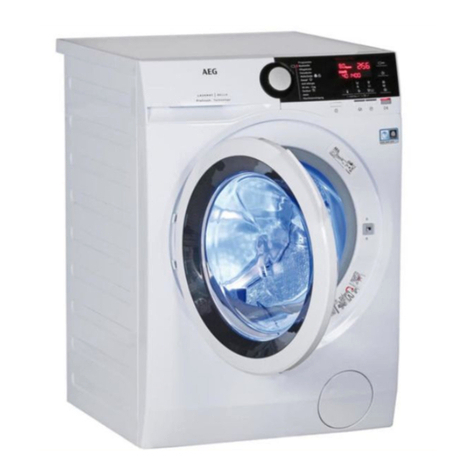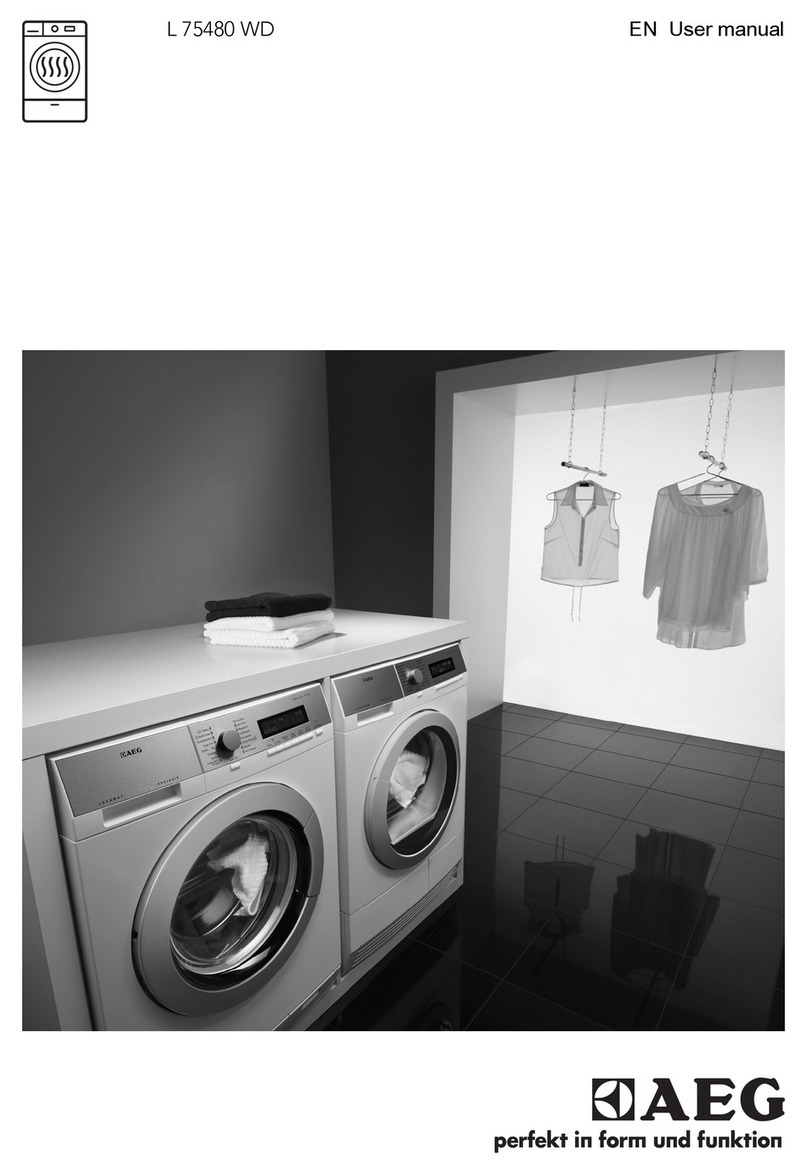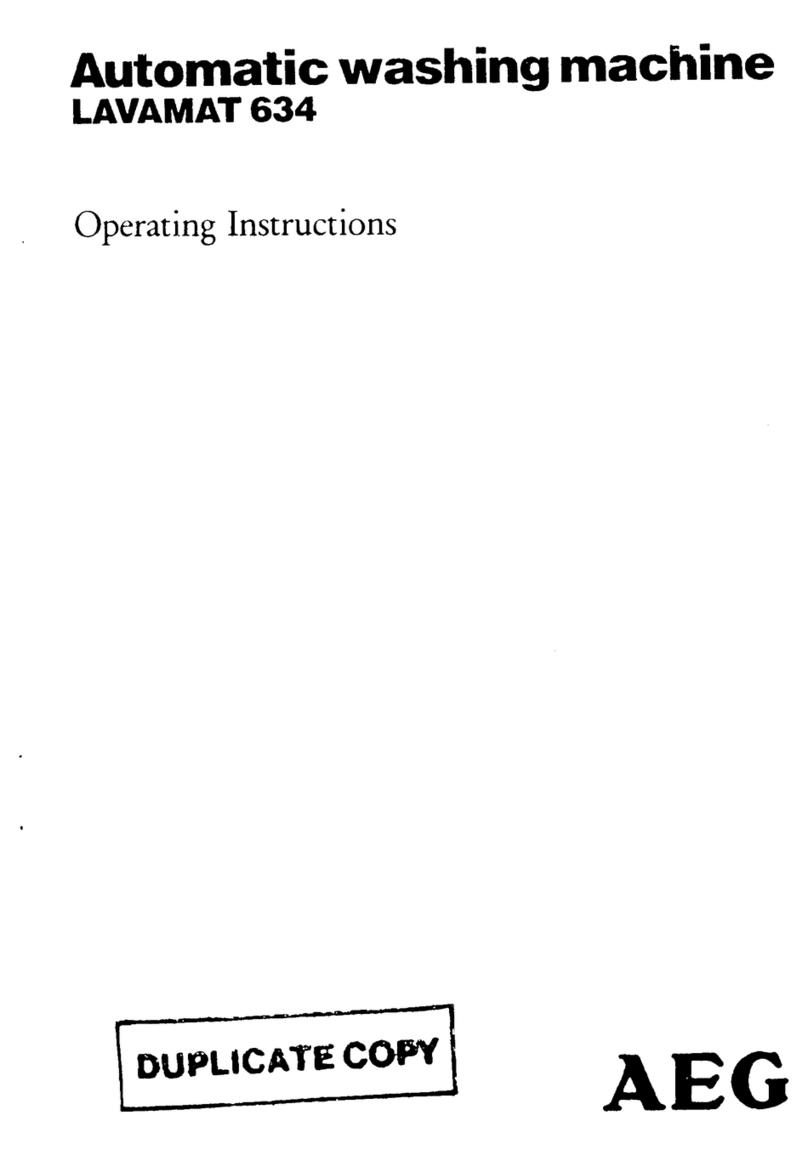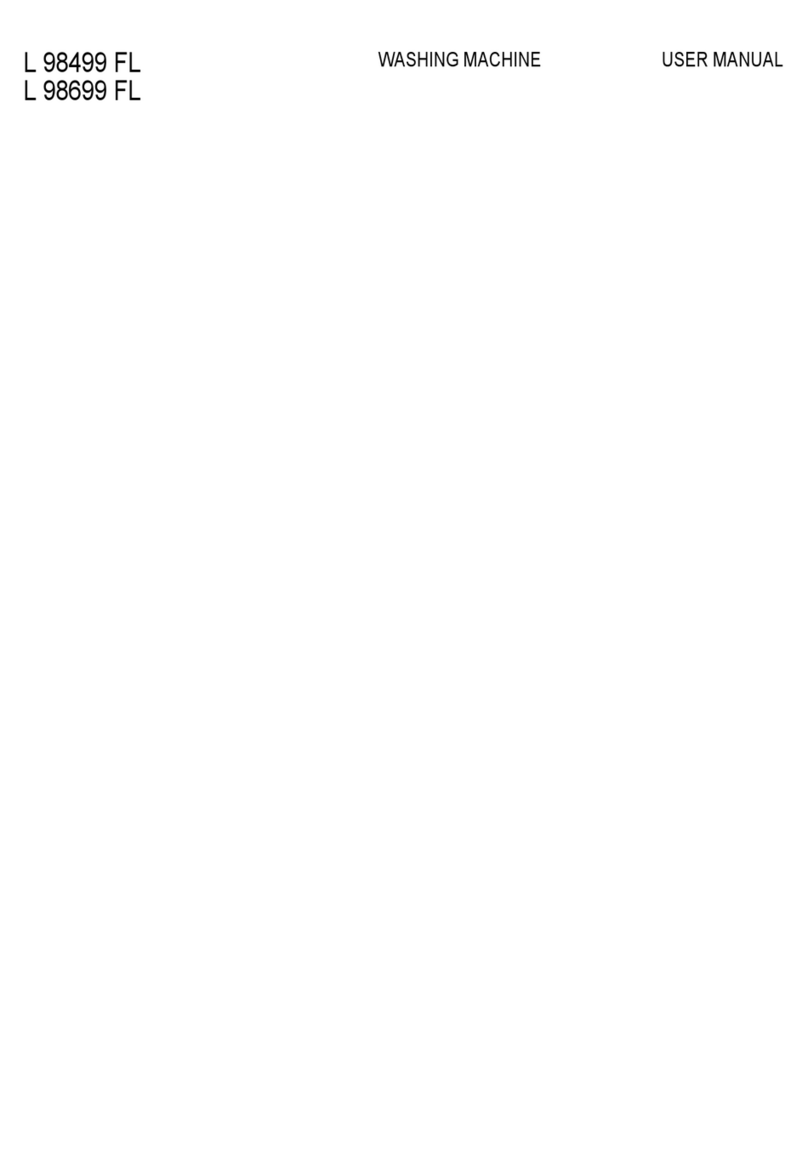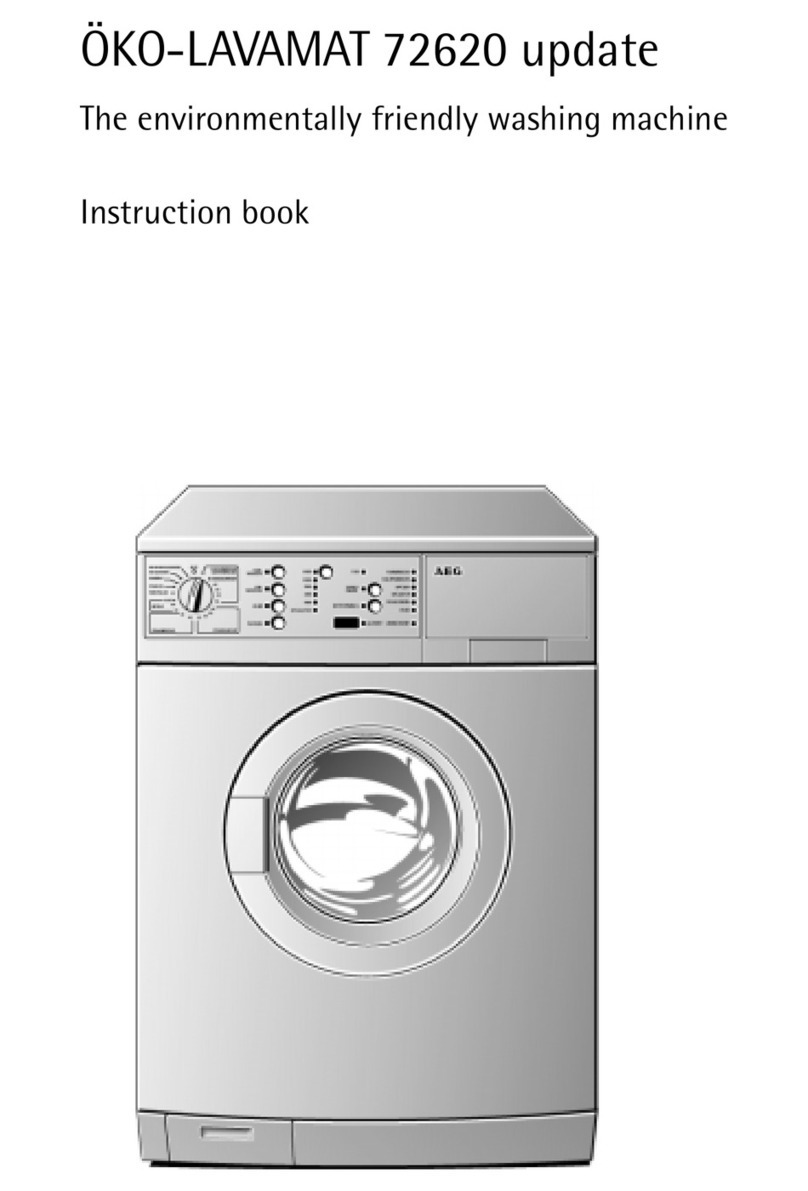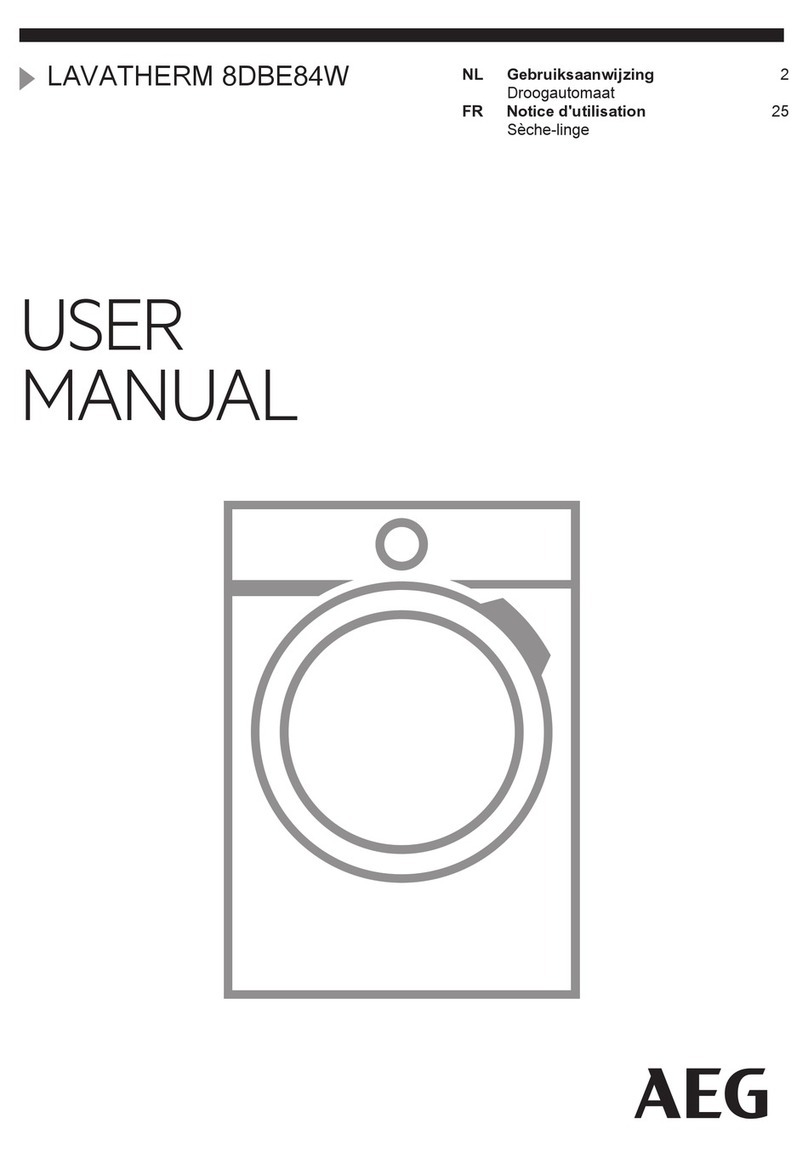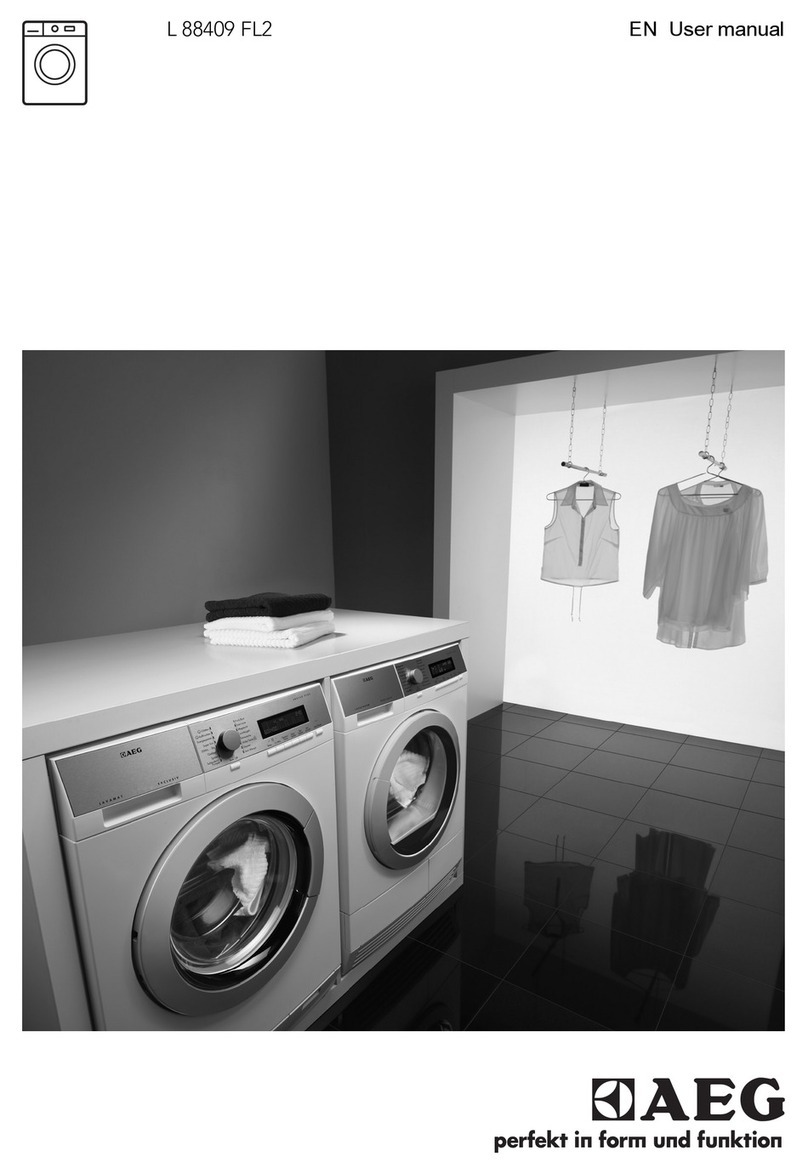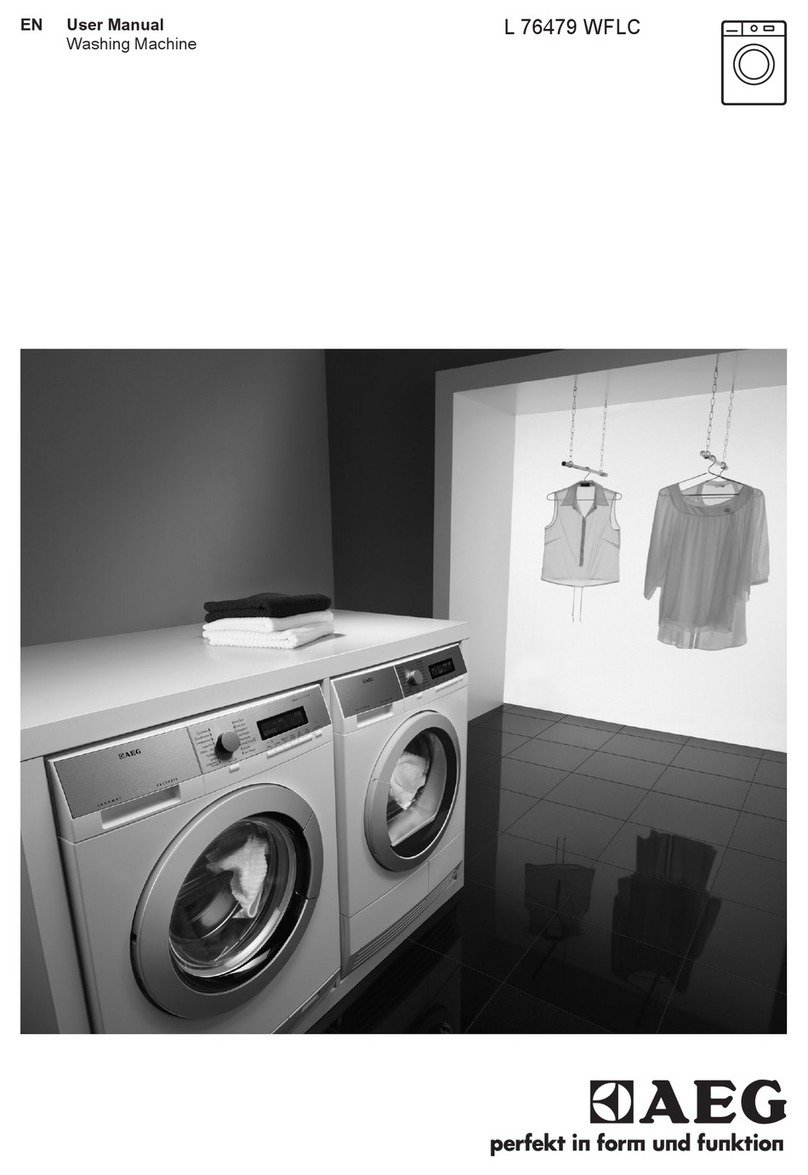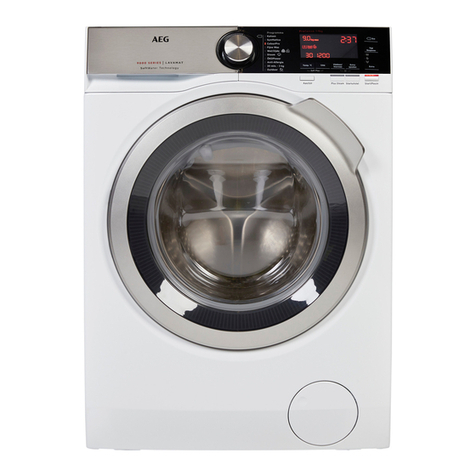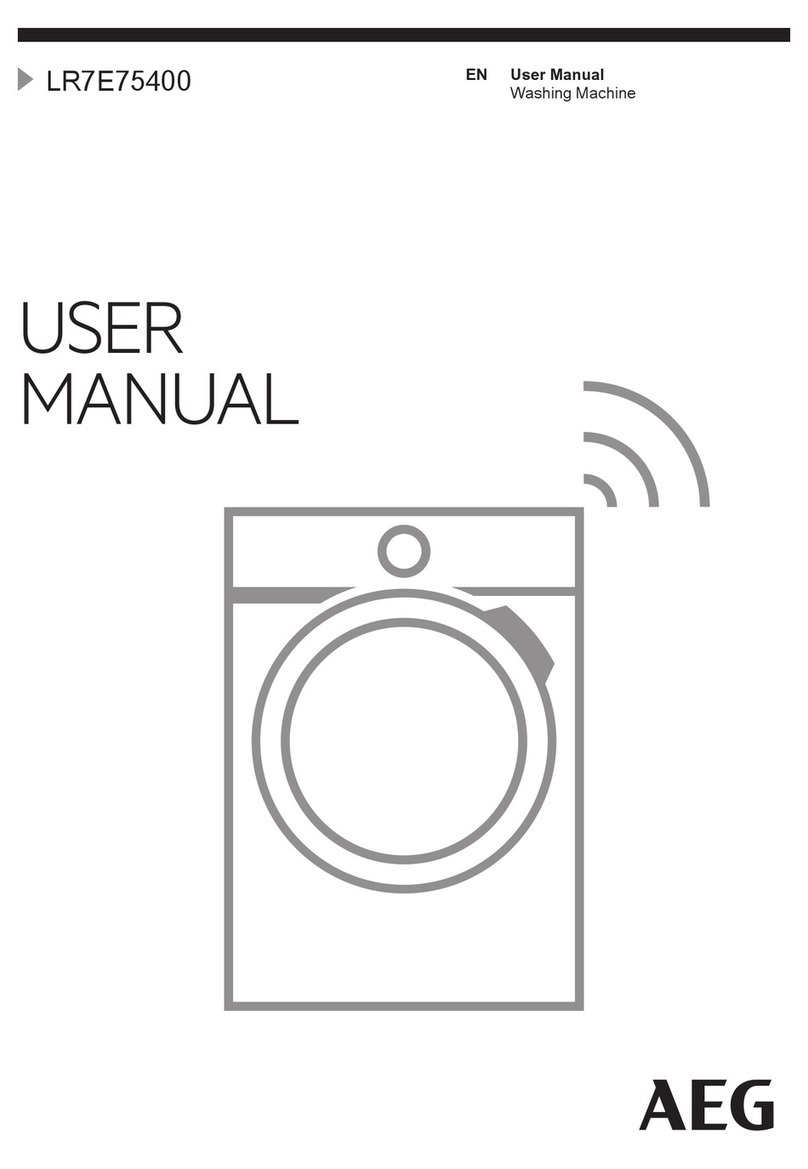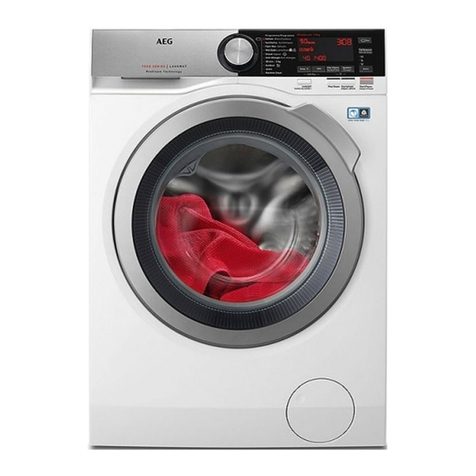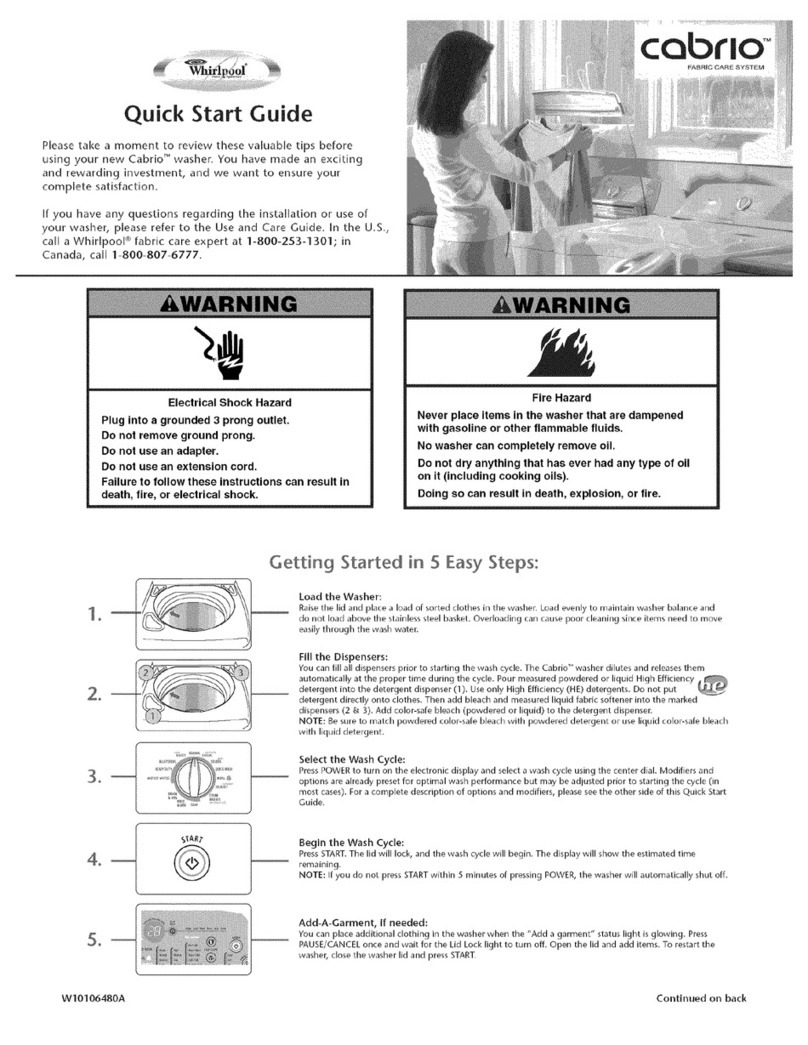5
- Do not switch the machine on if
the electrical cord is damaged, or
if the machine shows signs of damage to the
control panel, the work surface or the base
- Repairs to electrical appliances may only be carried
outbyqualifiedpersonnel. Incorrectrepairscanresult
in considerable danger for the user. Please only
contact our factory customer service or a repair
workshop approved by us. Only original AEG spare
parts fulfil all requirements.
- Do not allow children to play with the machine, and
keep domestic animals away from it.
- When disposing of the machine in a proper manner,
destroy the door locks and cut off the power supply
cord.
- Ifthemachineisimproperlyusedorincorrectlyoperated,
noresponsibilitycanbeacceptedforpossibledamage.
- Securelyattachthedischargehosetoavoidtheriskof
scalding and overflow.
- In case of breakdown, close the water tap and
disconnect the machine from the power supply. The
machineisdisconnectedwhenthe plug is removed or
the circuit-breaker(s) is (are) opened.
- Keep packing parts away from small children. The
plastic sheeting is particularly dangerous.
- If you are washing pre-cleaned garments, flammable
cleaning spirits must be completely evaporated.
- Do not use the machine for dry cleaning.
- If the machine is not connected to the potable water
supply, but to a rainwater or similar supply, please
observe the corresponding instructions.
- This machine complies with EC radio disturbance
requirements 87/308/EC, EN 55014, DIN VDE 0875
part 1 and EN 55 011 - DIN VDE 0875 part 11 as well
as the standard concerning effects on power supplies
EN 60 555 parts 1-3 - DIN VDE 0838 parts 1-3.


